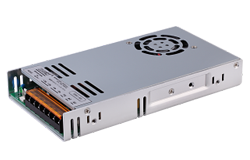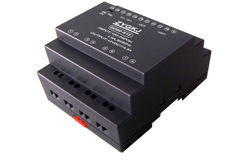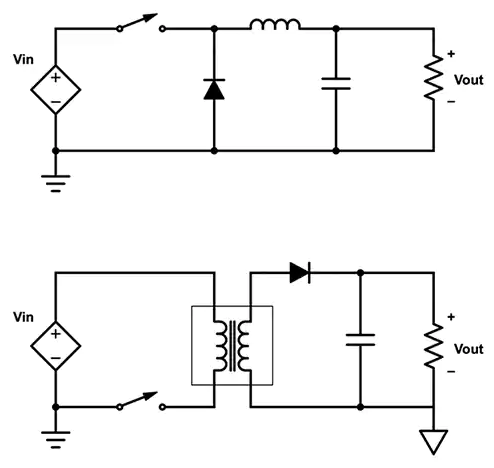nyheder
Unleashing the Power of Communication: The Advantages of a Bidirectional Converter
Author: ZYG Power Module Time: 2023-7-9
In today’s interconnected world, effective communication is crucial for the smooth functioning of various industries and sectors. Whether it is transmitting information between devices, converting data signals, or allowing different systems to communicate seamlessly, the role of a bidirectional converter cannot be underestimated. In this article, we will explore the numerous advantages of a bidirectional converter and its impact on enhancing communication capabilities.
A bidirectional converter, as the name suggests, is a device that can convert signals in two directions. It can convert data from one type to another and vice versa. This flexibility allows for efficient communication between different systems, ensuring compatibility, and enabling the exchange of vital information.
One of the significant advantages of a bidirectional converter is its ability to bridge the gap between different communication protocols. In today’s technology-driven world, various devices and systems operate on different protocols, making seamless communication a challenge. A bidirectional converter acts as a mediator, translating signals from one protocol to another, enabling devices to communicate effectively. This ensures that information can flow seamlessly between devices, irrespective of the protocol they are designed to work on.
Moreover, a bidirectional converter plays a vital role in enabling interoperability between different systems. With advancements in technology, the need for disparate systems to communicate with each other is increasing. However, these systems often operate on different data formats and protocols. By utilizing a bidirectional converter, these systems can exchange data without any compatibility issues. This not only saves time and effort but also enhances productivity and efficiency in various industries like manufacturing, healthcare, and transportation.
In addition to facilitating communication between different systems, bidirectional converters also provide the advantage of signal conversion. Many times, it becomes necessary to convert analog signals to digital or vice versa. This conversion is essential in applications like audio and video transmission, where analog signals need to be converted to a digital format for processing, storage, or transmission purposes. With a bidirectional converter, this conversion can be effortlessly achieved, ensuring accurate and high-quality signal transmission.

Furthermore, bidirectional converters have a significant role to play in the field of renewable energy. As the demand for renewable energy sources like solar and wind power continues to grow, bidirectional converters are essential in managing the flow of energy between different sources and the power grid. These converters allow for efficient power conversion, ensuring that the energy generated from these sources can be utilized effectively. Additionally, bidirectional converters enable the energy stored in batteries to be fed back into the grid during peak demand periods, further optimizing the use of renewable energy.
In conclusion, the advantages of a bidirectional converter are numerous and far-reaching. From bridging the gap between different communication protocols to enabling interoperability between systems and facilitating signal conversion, these devices play a crucial role in enhancing communication capabilities. Moreover, bidirectional converters have a significant impact on the renewable energy sector, ensuring efficient power conversion and utilization. As technology continues to evolve, the demand for bidirectional converters is only expected to increase. By harnessing the power of communication through bidirectional converters, we can unlock new possibilities and drive advancements in various industries.
Tidligere: Introducing the Advanced DC DC Converter EX Series
Næste: Custom Type Power Series: Unleashing the Potential of Personalized Typography
relevant information
-
2023-5-2
Industrial AC-DC Converter for Efficient Power Conversion
Industrial AC-DC converters are devices that convert alternating current (AC) to direct current (DC) for use in industrial applications. They are designed to provide efficient power conversion, enabling industrial equipment to operate reliably and efficiently. These converters are typically used in industrial processes such as manufacturing, automation and control systems, and power distribution systems. The primary function of an AC-DC converter is to convert the voltage and frequency of incoming AC power to the appropriate DC voltage required by the equipment. This requires a complex circuitry that includes a rectifier, filter, and voltage regulator. The rectifier converts the AC voltage to DC while the filter smoothes out the output voltage, and the voltage regulator ensures the output voltage is maintained...
Se detaljer -
2023-4-28
Industrial AC-DC Converter: Efficient and Reliable Power Conversion
An industrial AC-DC converter is a device used to convert electrical power from alternating current (AC) to direct current (DC). This type of converter is commonly used in industrial settings where reliable and efficient power conversion is essential for the smooth operation of equipment and processes.The basic function of an AC-DC converter is to take the AC power supplied by the utility grid and convert it to DC power that can be used to power electronic devices and equipment. This conversion process involves a number of components including transformers, diodes, capacitors, and transistors.One of the primary benefits of using an industrial AC-DC converter is that it allows for more efficient use of electrical power. AC power is commonly used in...
Se detaljer -
2023-8-5
AC/DC Power Supply Module: Providing Reliable Electrical Power for Various Applications
Introduction In the modern world, reliable electrical power is essential for the smooth functioning of various applications. From electronic devices to industrial machinery, a stable power supply is crucial to ensure optimal performance and prevent damage due to voltage fluctuations. This is where the AC/DC Power Supply Module comes into play. Designed with precision and efficiency in mind, this module is a reliable solution for meeting the power requirements of diverse applications. Understanding the AC/DC Power Supply Module The AC/DC Power Supply Module is a compact electronic device that converts the alternating current (AC) power from a wall outlet into direct current (DC) power suitable for powering electronic components. It operates on the principle of electromagnetic induction and employs various...
Se detaljer -
2023-9-16
Maximize Efficiency and Flexibility with a Modular Power Supply for Your PC
Having a reliable and efficient power supply is crucial for any PC user. Whether you are a gamer, a professional, or a casual user, investing in a modular power supply can significantly enhance your computing experience. A modular power supply provides several benefits, including increased efficiency, flexibility, and overall system performance. One of the primary advantages of a modular power supply is its enhanced efficiency. These power supplies are designed to deliver power more efficiently, resulting in reduced energy consumption and lower electricity bills. Traditional power supplies have fixed cables that can lead to cable clutter, hindering proper airflow within the PC case. This can cause overheating and reduced efficiency. In contrast, a modular power supply allows users to connect...
Se detaljer -
2023-4-17
AC-DC Converter: Transforming Alternating Current to Direct Current
An AC-DC converter, also known as a rectifier, is an electronic device that is used to transform alternating current (AC) into direct current (DC). This process is essential in many applications where DC voltage is required, such as in electronic devices and power supplies. The conversion process involves a diode bridge rectifier that allows the AC current to pass through in only one direction, effectively converting it into DC voltage. This rectifier is made up of four diodes that are arranged in a specific pattern to create a bridge circuit. During the positive half-cycle of the AC voltage, one pair of diodes conducts and allows the current to flow through them, while the other pair of diodes is reverse-biased and...
Se detaljer -
2023-2-27
An AC-DC converter is a device that converts alternating current (AC) to direct current (DC). This conversion is essential in electronic devices that require a steady supply of DC voltage, such as computers, smartphones, and power tools. There are two types of AC-DC converters: unregulated and regulated. Unregulated AC-DC converters are simpler and cheaper but provide an unstable output voltage that varies with changes in input voltage and load. Regulated AC-DC converters, on the other hand, provide a stable output voltage that is independent of input voltage and load. Regulated AC-DC converters are widely used in modern electronics, especially in high-performance applications where precise and reliable power is critical. The basic principle behind an AC-DC converter is rectification, which involves...
Se detaljer


















